No products in the cart.
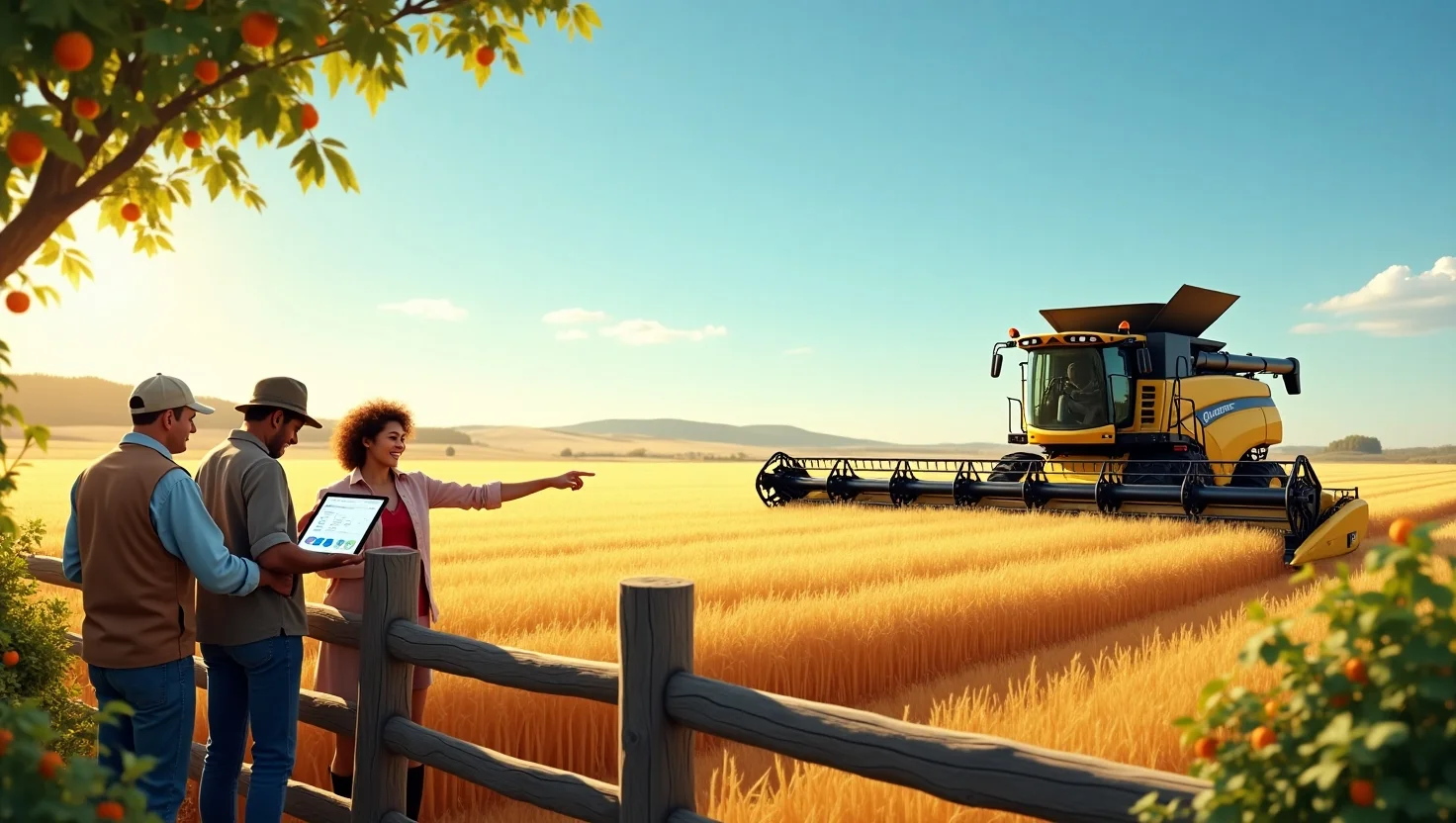
1. Introduction:
Imagine a cornfield in Iowa where machines handle everything from planting to harvesting, no human hands involved. This isn’t science fiction. It’s the direction many U.S. farms are heading as artificial intelligence (AI) becomes increasingly integrated into agriculture.
With rising labor shortages and the growing demand for food, American farmers are under pressure to do more with less. Manual labor, long the backbone of AI Farm Automation USA, is facing a slow but steady transformation. AI promises speed, precision, and cost savings. But can it truly replace the skilled hands and decision-making of human farm workers?
From autonomous tractors to smart sensors that detect crop diseases, AI Farm Automation USA is reshaping the way we produce food. Still, many farmers wonder: will this technology eliminate jobs or create new opportunities?
In this article, we’ll explore how far AI has come in replacing manual labor on U.S. farms, where it’s succeeding, and where it’s still falling short. We’ll also look at the costs, social impacts, and the hybrid future of farming that blends human skill with machine intelligence.
2. Understanding Manual Labor’s Role in U.S. Farms
Manual labor has long been the engine of American agriculture. From sunrise to sundown, workers tend to crops, operate equipment, manage livestock, and handle post-harvest tasks. U.S. farms, especially in fruit and vegetable production, still rely heavily on human hands for labor-intensive work that machines haven’t fully mastered, like hand-picking delicate produce or identifying subtle signs of disease in animals.
However, the industry is facing a significant labor shortage. Tight immigration policies, rising wages, and fewer people willing to take on physically demanding farm jobs have made it harder for farmers to find reliable labor. This gap has pushed many to consider alternatives, with farming automation and AI-driven equipment now gaining ground.
Despite technological progress, the manual workforce in agriculture still plays a critical role in maintaining productivity and quality. The human ability to adapt, assess complex conditions, and make real-time decisions is something even the most advanced algorithms struggle to match.
AI may eventually reduce the need for some forms of manual labor, but for now, humans remain an essential part of the equation.
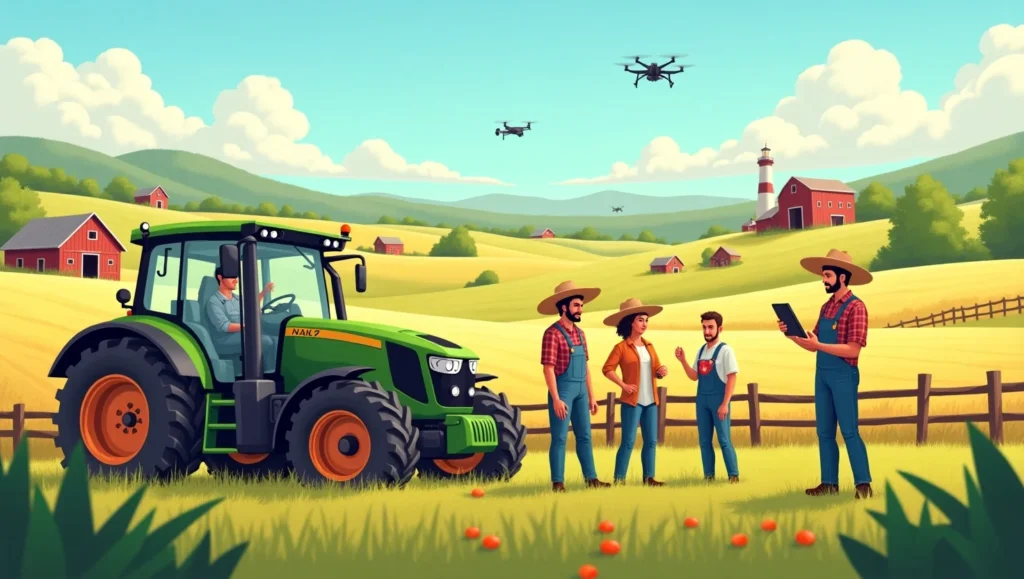
3. What AI Can (and Can’t) Do on AI Farm Automation USA
Artificial intelligence is making incredible strides in agriculture, performing tasks that once required human effort. Autonomous tractors now navigate fields using GPS and machine vision. AI-powered drones monitor crop health, detect pest outbreaks, and even apply precise amounts of fertilizer or pesticide. Robots equipped with computer vision can harvest crops like tomatoes or strawberries with remarkable speed and accuracy.
These technologies offer clear benefits: increased efficiency, reduced reliance on seasonal workers, and fewer human errors. Smart farming tools, such as predictive analytics platforms, help farmers make better decisions about planting schedules, irrigation, and disease prevention.
But AI isn’t a silver bullet. It struggles with unpredictable, nuanced tasks, like judging fruit ripeness by touch or navigating uneven terrain in wet conditions. Livestock management, especially when it comes to animal health or birthing assistance, still requires human intuition.
Moreover, advanced AI systems require high up-front investment and technical know-how, which can be a barrier for small and mid-sized farms. While AI is replacing repetitive agricultural tasks, it can’t yet replicate the full spectrum of decisions and physical labor performed by skilled farm workers.
4. Cost-Benefit Analysis: Is AI Worth the Shift?
Switching to AI-powered systems in agriculture comes with both promise and price. On the surface, AI farming tools offer long-term savings by reducing labor costs, minimizing waste, and boosting crop yields. Precision systems, such as smart irrigation and predictive analytics, ensure better resource allocation and quicker decision-making, often leading to higher profits over time.
However, the upfront costs can be steep. Buying autonomous tractors, robotic harvesters, or subscription-based AI software isn’t cheap. For small to mid-sized farms, the investment might be out of reach without government subsidies or partnerships. Additionally, maintenance, staff training, and tech integration bring ongoing expenses.
There’s also a learning curve. Farmers must understand data analytics, equipment troubleshooting, and software management, all of which can be challenging without technical support.
Still, for many, the trade-off is worth it. As labor shortages in farming continue and climate challenges mount, AI offers scalability and resilience. But it’s most effective when used alongside human expertise, not as a full replacement.
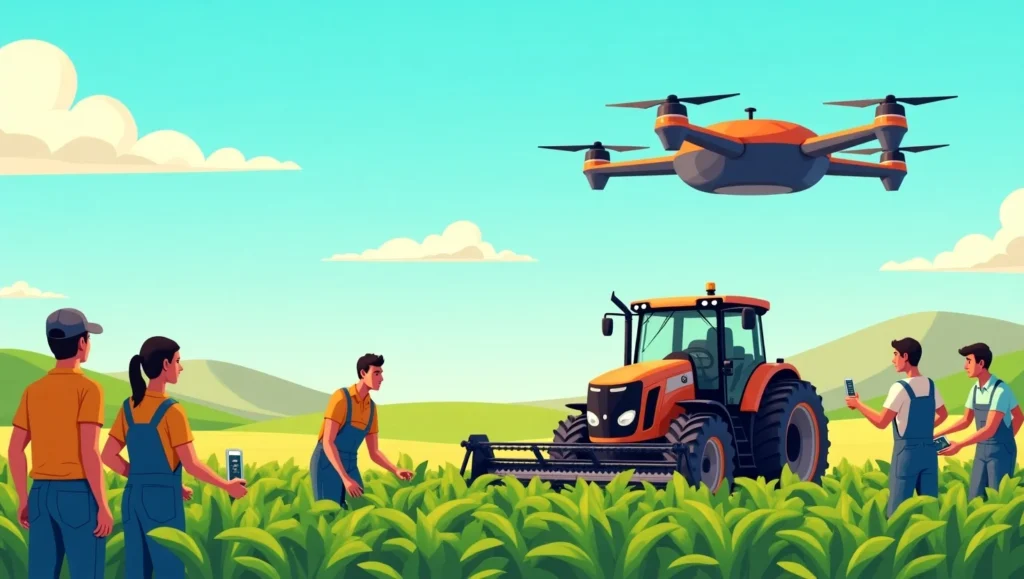
5. The Human Impact: Jobs, Skills & Transitioning the Workforce
As AI reshapes U.S. agriculture, one pressing concern is its impact on the rural workforce. Will AI farming technology replace jobs, or will it create new types of employment? The answer lies somewhere in between.
Routine, repetitive roles, such as manual spraying, weeding, or basic data collection, are already being automated. However, this shift opens the door for new skill-based roles: data analysts, equipment technicians, drone operators, and farm system managers. The problem? Many current workers may not yet have the training or access needed to make this transition.
This creates a skills gap in agriculture. To bridge it, farmers, policymakers, and educators must invest in upskilling programs focused on smart farming systems and agri-tech literacy. Community colleges and extension services have started introducing courses, but more scalable, inclusive efforts are needed, especially in rural areas.
There’s also a social impact. Generational farmers may resist change, fearing job loss or cultural erosion. Transparent communication, phased adoption, and hybrid workflows—where humans work with machines, can help ease the transition.
6. Looking Ahead – The Future of AI & Human Labor in Farming
The future of farming isn’t about replacing humans, it’s about reshaping roles. As AI in agriculture continues to evolve, the most successful farms will be those that find balance: leveraging smart technologies to handle repetitive tasks, while relying on humans for critical thinking, intuition, and adaptability.
We’re already seeing signs of this hybrid model. AI-driven decision-making tools support, rather than override, farmers’ judgment. Meanwhile, robotics handle field tasks at scale, improving efficiency without eliminating oversight.
Policy and infrastructure will play a key role in shaping this future. Investments in rural broadband, technical training, and farmworker education will ensure that smaller farms and underserved communities aren’t left behind. Public-private partnerships may also help democratize access to AI-powered agricultural tools.
Ultimately, AI’s role in farming isn’t about subtraction, it’s about evolution. The shift is toward smarter workflows, data-informed practices, and a new generation of tech-savvy farmers. Manual labor may be changing, but it’s far from disappearing.

7. Conclusion & Call to Action
AI is undeniably transforming agriculture, promising a future where farming is more efficient, sustainable, and scalable. However, while automation and AI-powered tools can replace some forms of manual labor, they cannot fully replicate the human intuition and judgment that have long been essential to farming. Instead of viewing AI as a replacement, it should be seen as a tool that works alongside human expertise, optimizing productivity while preserving the critical human role in farming.
Farmers who adapt to AI in agriculture stand to gain immensely, but it’s crucial that this transition includes training, infrastructure, and accessible technology. As we move forward, the blend of smart farming systems with traditional farming knowledge will shape a more resilient, tech-enhanced agricultural workforce.
Take action today by exploring AI tools that fit your farm’s needs. Whether it’s autonomous tractors, drones, or predictive analytics, start small and scale as you learn. For farmers looking to stay competitive, embracing AI is no longer optional, it’s essential.
FAQs:
Q1. How is AI changing manual labor on U.S. farms?
AI is automating repetitive tasks like planting, harvesting, and crop monitoring through tools like autonomous tractors and drones, improving efficiency and reducing reliance on manual labor.
Q2. What types of farm tasks can AI automate?
AI can automate tasks such as weeding, spraying pesticides, harvesting crops, monitoring soil health, and predicting weather patterns, streamlining farm operations.
Q3. Will AI replace farm workers entirely?
No, AI will not fully replace farm workers. It will complement human workers, automating routine tasks while humans focus on decision-making, complex problem-solving, and overseeing operations.
Q4. How much does it cost to implement AI on a farm?
The cost of implementing AI varies widely, with initial investments in autonomous machines and software, along with maintenance and training costs. For small farms, subsidies and partnerships may help offset these costs.
Q5. What skills will farmers need to adapt to AI technology?
Farmers will need skills in data analysis, equipment operation, and AI software management to effectively integrate and utilize new technology in farming.
Related Articles
Farm Automation
How AI Is Helping Organic Farmers Stay Competitive
1. Introduction: Organic farming has always been admired for its sustainability, purity,...
Farm Automation
AI Farm Assistants: Are Virtual Advisors the Future of Agriculture
1. Introduction: Imagine having a personal farm assistant who never sleeps, analyzes...
Farm Automation
How U.S. Farmers Use AI to Monitor Weather and Make Better Decisions
1. Introduction: For generations, U.S. farmers have relied on intuition and traditional...
Farm Automation
Affordable AI Tools Every U.S. Farmer Can Use in 2025
1. Introduction: Think AI is only for big corporate farms with deep...
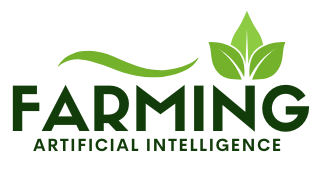
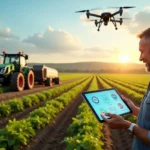

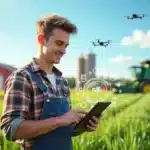

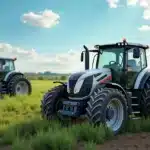



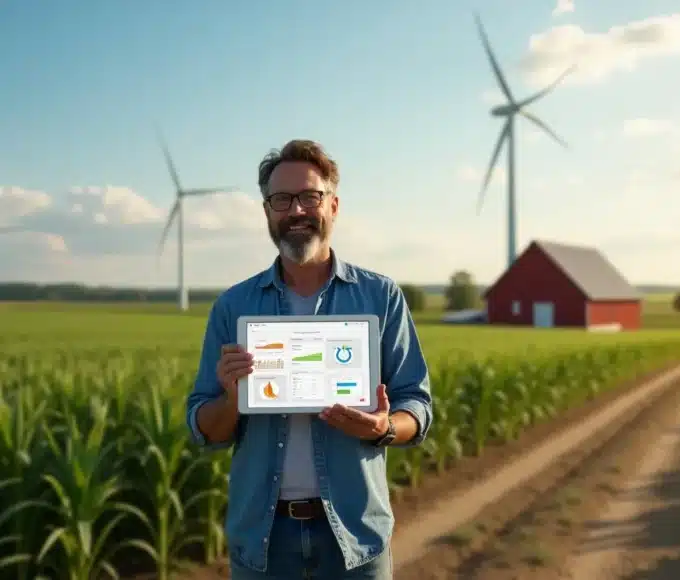

Leave a comment